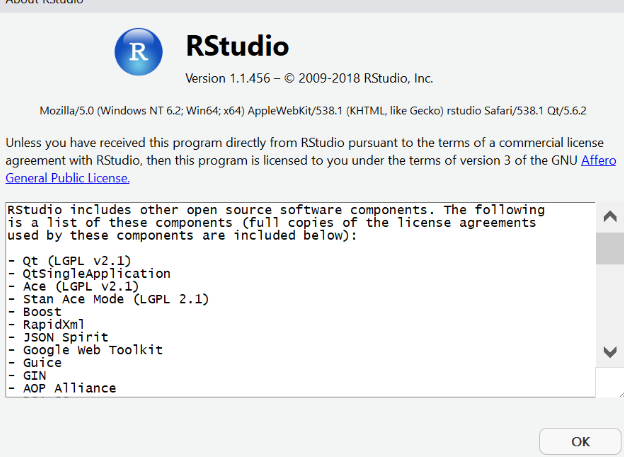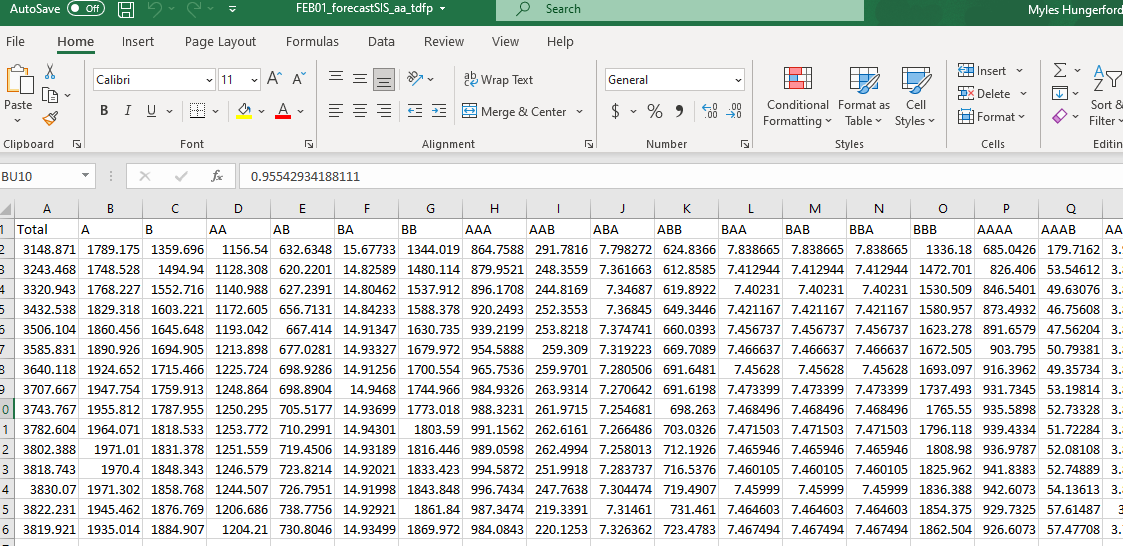EDITED FOR REPRODUCIBILITY
Good afternoon everyone, I'm encountering the following problem with the top-down forecasting proportions (tdfp) method for forecasting a hierarchical time series in R.
Background: 10.4 Top-down approaches | Forecasting: Principles and Practice (2nd ed)
My data has seven levels, which makes the bottom level series very wide so it's hard to post in this forum.
The neural networks method for forecasting top down proportions works very well, and produces bottom level time series data correctly. (I would like to put embedded media here but forum rules won't allow it.)
However the auto arima top down forecast produces NAs for the higher level data, while producing normal forecasts for the 5th level time series data and below. This is what that looks like:
If I remove the top-down stipulation from the hierarchical time series forecast code then I get a normal auto arima forecast. (I would like to put embedded media here but forum rules won't allow it.)
Has anyone encountered this problem before and, if so, what can I do to get the higher level forecast series to show up? Auto arima has typically been my most accurate forecasting method. Thank you in advance for your help.
Here is the code you can use to reproduce the error:
library(hts)
library(forecast)
library(readxl)
library(readr)
## This needs to be edited to point to the Github repository.
urlfile <- "https://raw.githubusercontent.com/myleshungerford/TopDownHierarchicalForecasting/main/SIS_Time_Series.csv"
SIS_Time_Series <- read_csv(url(urlfile))
View(SIS_Time_Series)
SIS_Start_Year <- 2017
freq <- 20
## These variables need to be updated/checked every time you run the model
Current_Year <- 2022
Current_cycle_month <- 5
current_month_name <- "FEB01"
## End of updated Variables
## These variables are derived, they do NOT need to be updated every month
Forecast_horizon <- (freq - Current_cycle_month)
nodes <- list(2, rep(2, 2), rep(2, 4), rep(2, 8), rep(2, 16), rep(2, 32))
## End of variables
## The following code will generate the alternate top-down time series for SIS
SISts <- ts(SIS_Time_Series, start = c(SIS_Start_Year, 1), end = c(Current_Year, Current_cycle_month), frequency = freq)
y <- hts(SISts, nodes = nodes)
allf <- forecast(y, h = Forecast_horizon, method = "tdfp", FUN = function(x) ets(x))
fcdf <- as.data.frame(allts(allf))
write.table(fcdf, file=paste(current_month_name, "forecastSIS_ets_tdfp.csv", sep = "_"), sep=",", row.names=FALSE)
allf <- forecast(y, h = Forecast_horizon, method = "tdfp",FUN = function(x) hw(x))
fcdf <- as.data.frame(allts(allf))
write.table(fcdf, file=paste(current_month_name, "forecastSIS_hw_tdfp.csv", sep = "_"), sep=",", row.names=FALSE)
allf <- forecast(y, h = Forecast_horizon, method = "tdfp", FUN = function(x) stlf(x))
fcdf <- as.data.frame(allts(allf))
write.table(fcdf, file=paste(current_month_name, "forecastSIS_stlf_tdfp.csv", sep = "_"), sep=",", row.names=FALSE)
allf <- forecast(y, h = Forecast_horizon, method = "tdfp", FUN = function(x) nnetar(x, repeats = 200))
fcdf <- as.data.frame(allts(allf))
write.table(fcdf, file=paste(current_month_name, "forecastSIS_nn_tdfp.csv", sep = "_"), sep=",", row.names=FALSE)
allf <- forecast(y, h = Forecast_horizon, method = "tdfp", FUN = function(x) auto.arima(x))
fcdf <- as.data.frame(allts(allf))
write.table(fcdf, file=paste(current_month_name, "forecastSIS_aa_tdfp.csv", sep = "_"), sep=",", row.names=FALSE)



